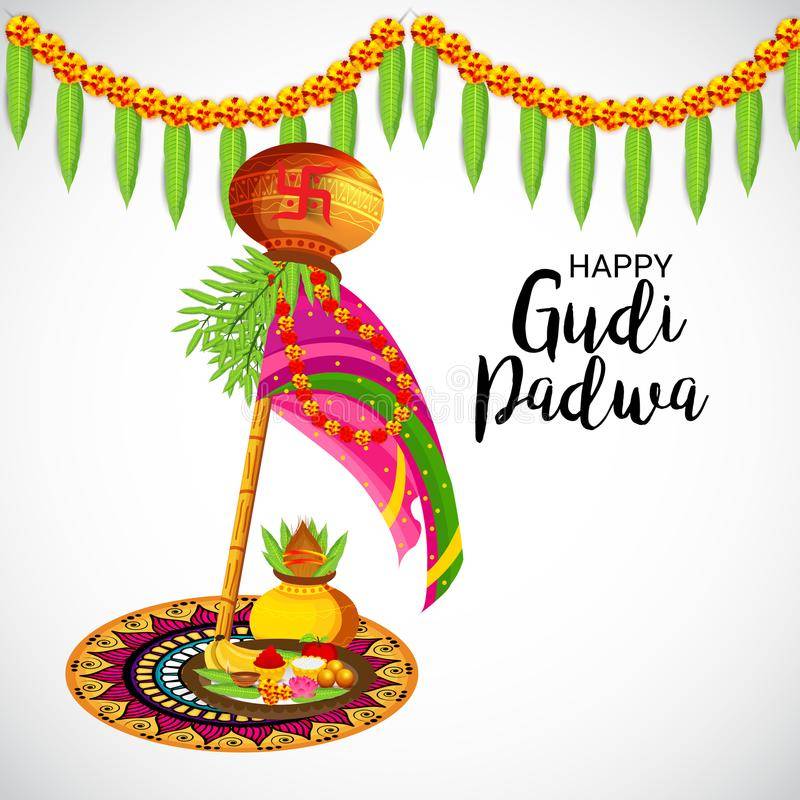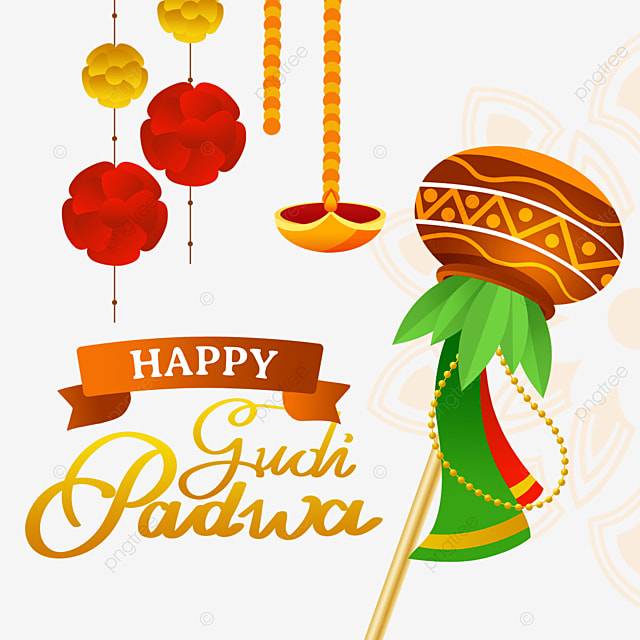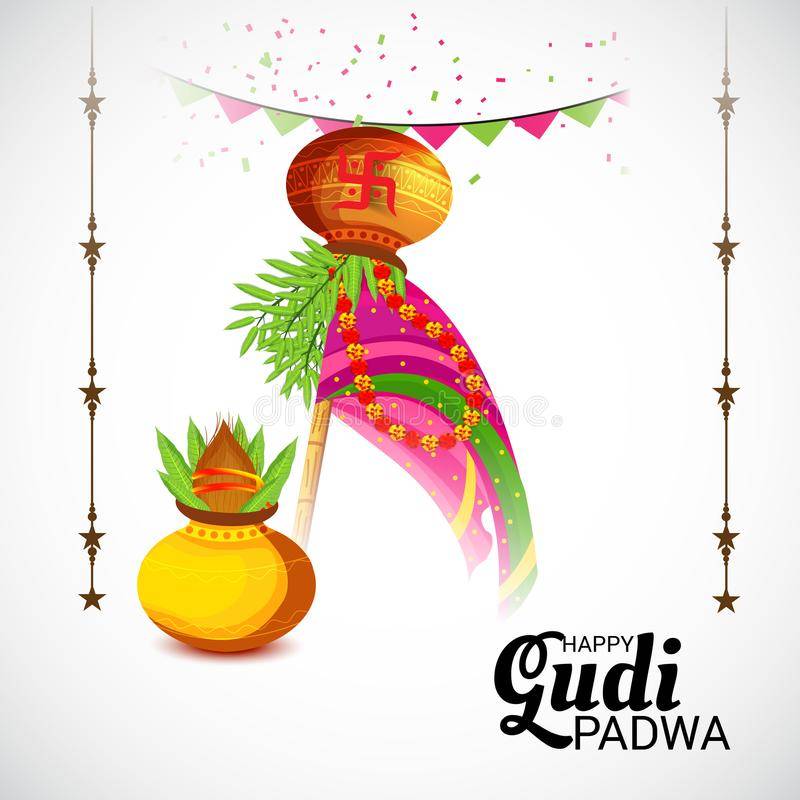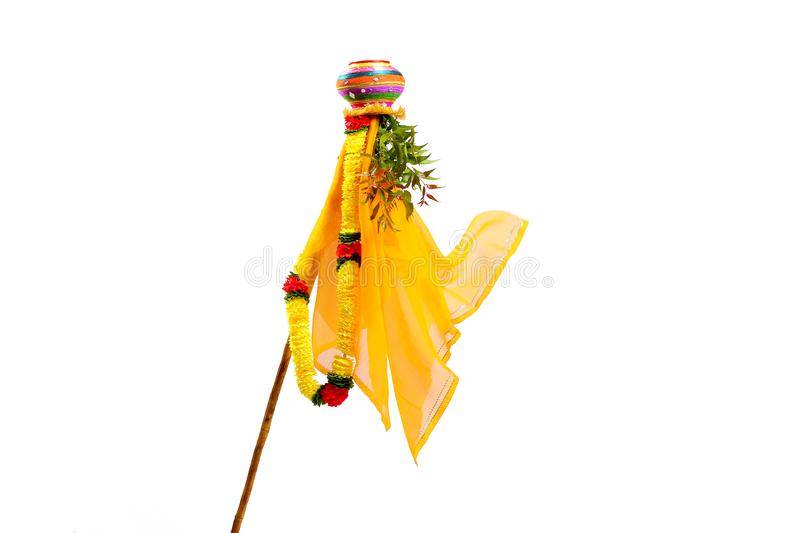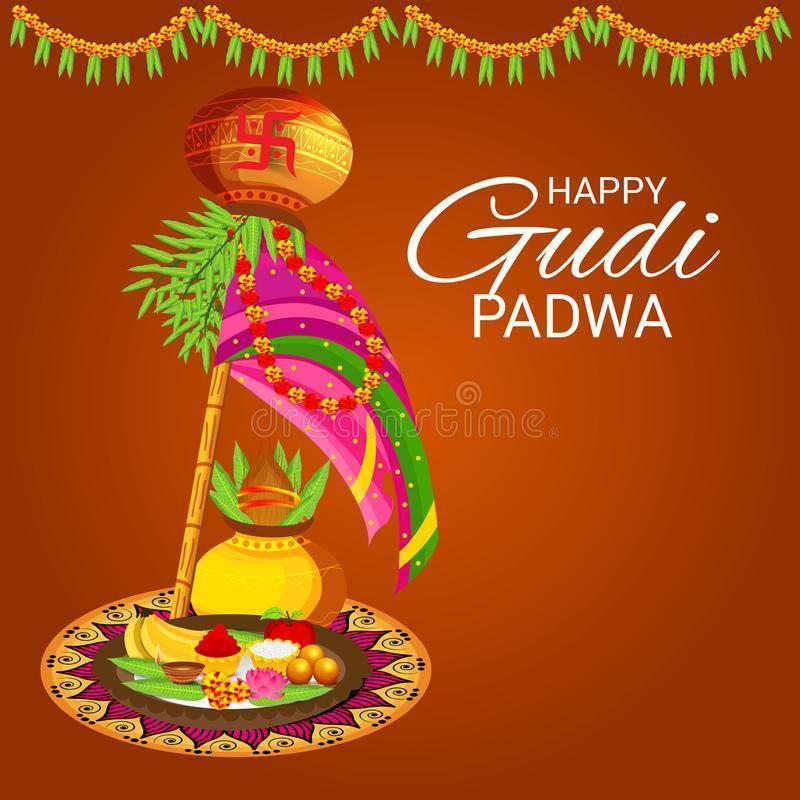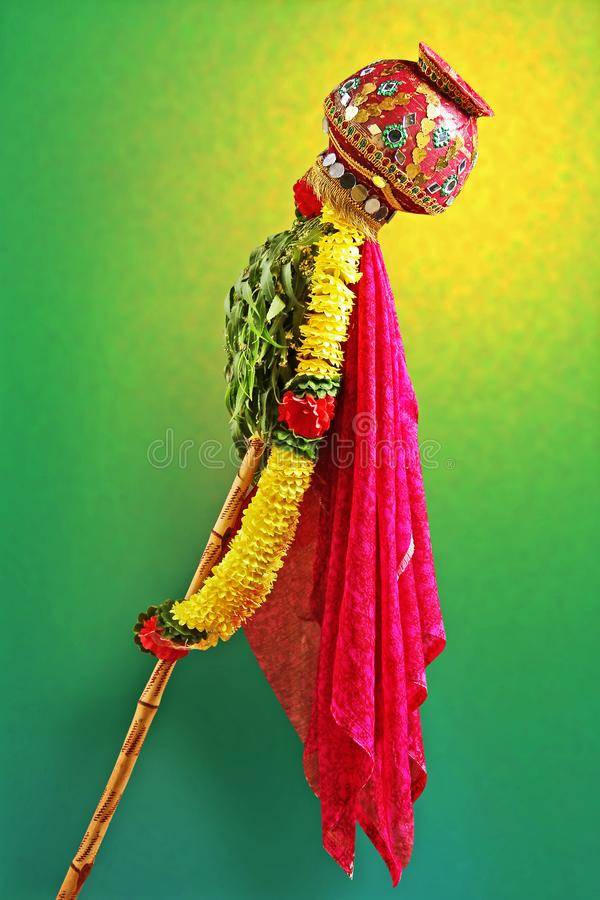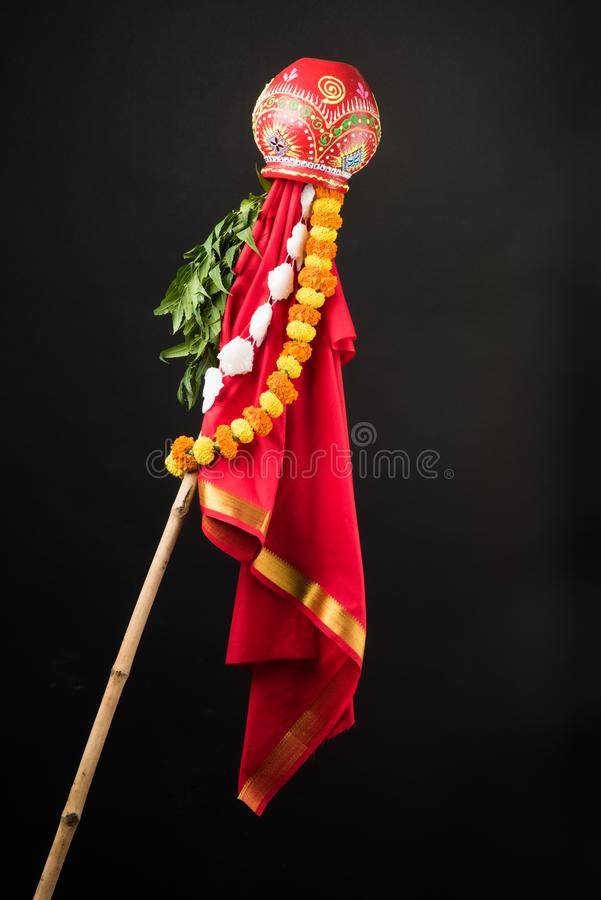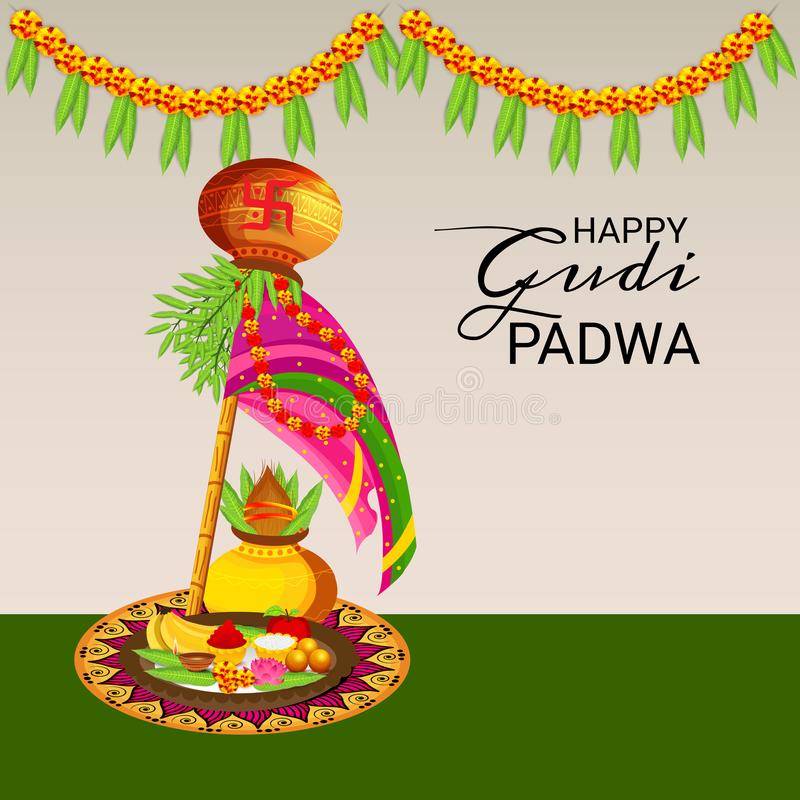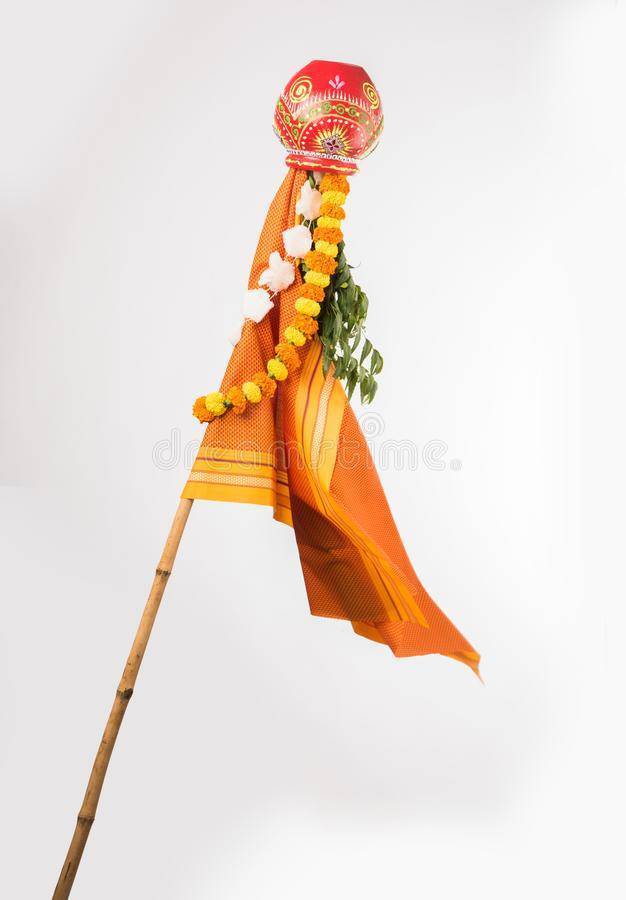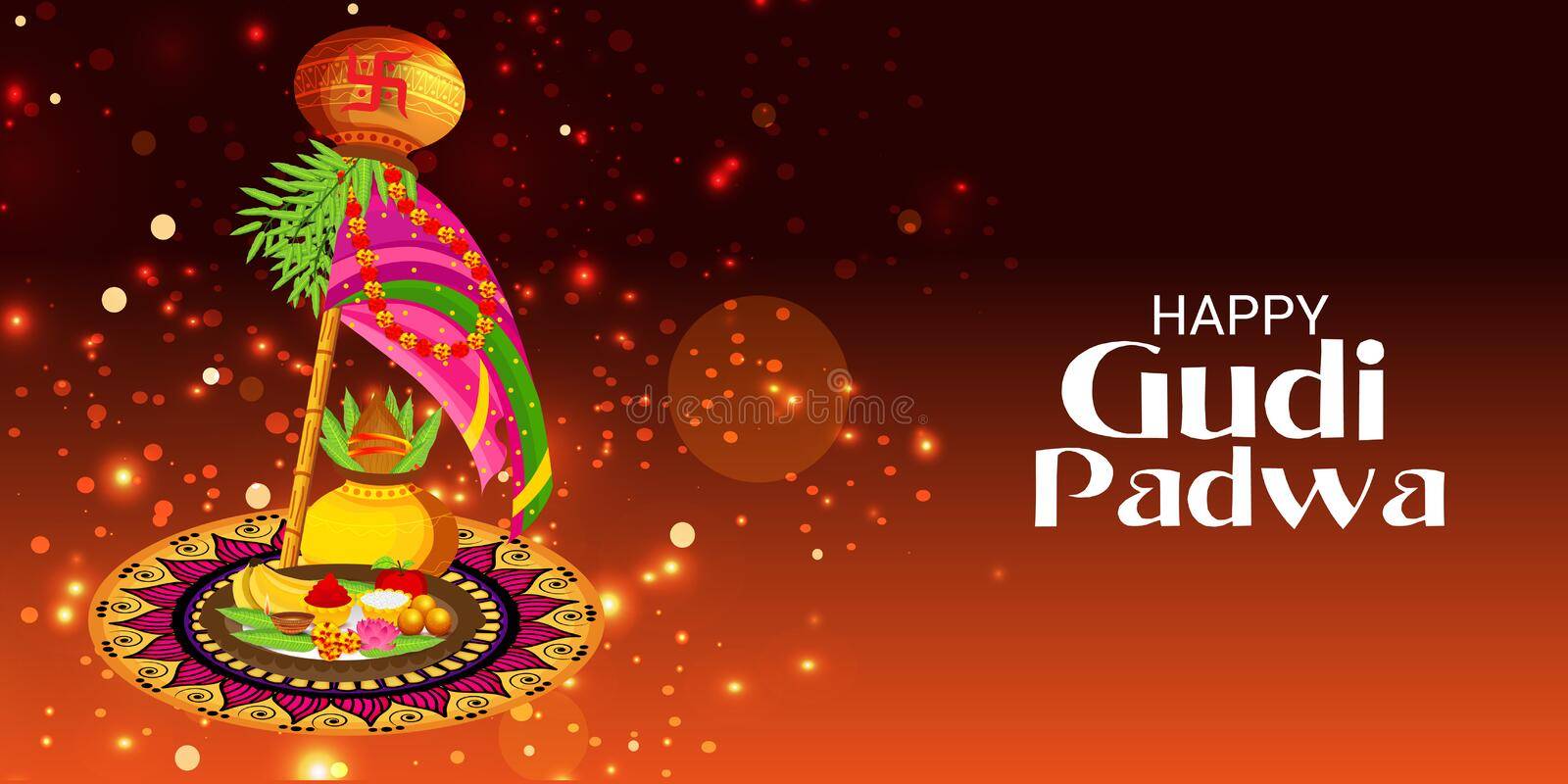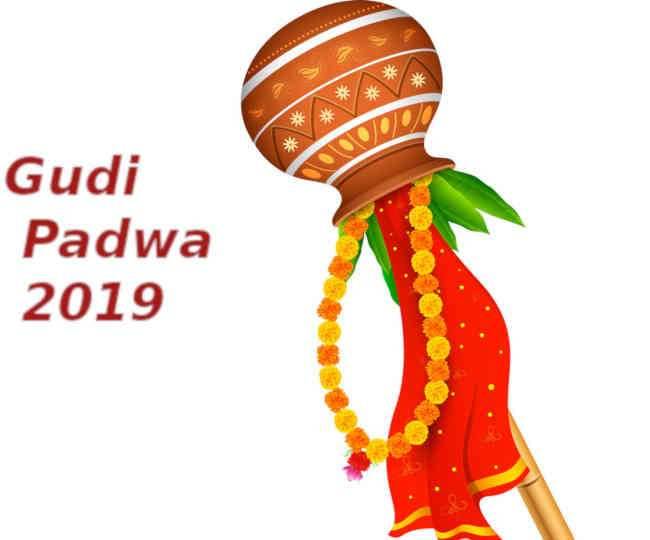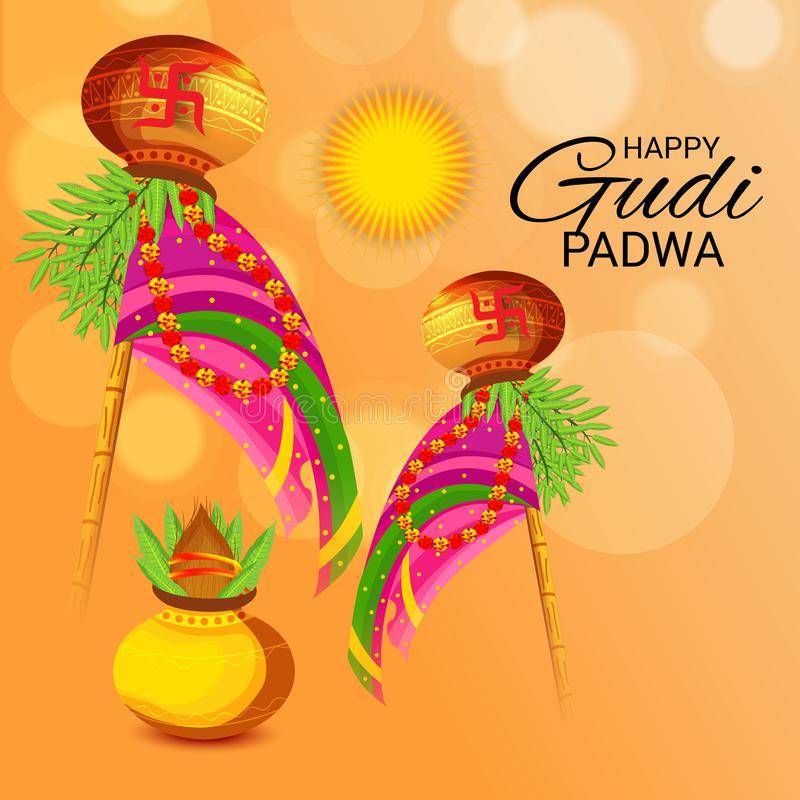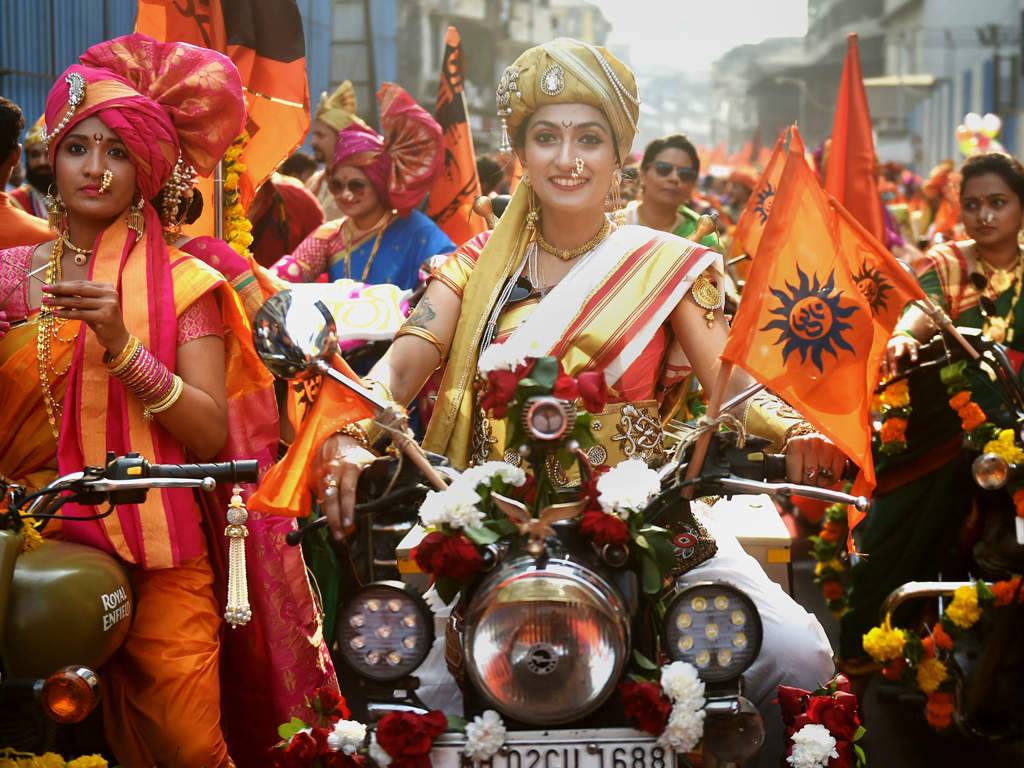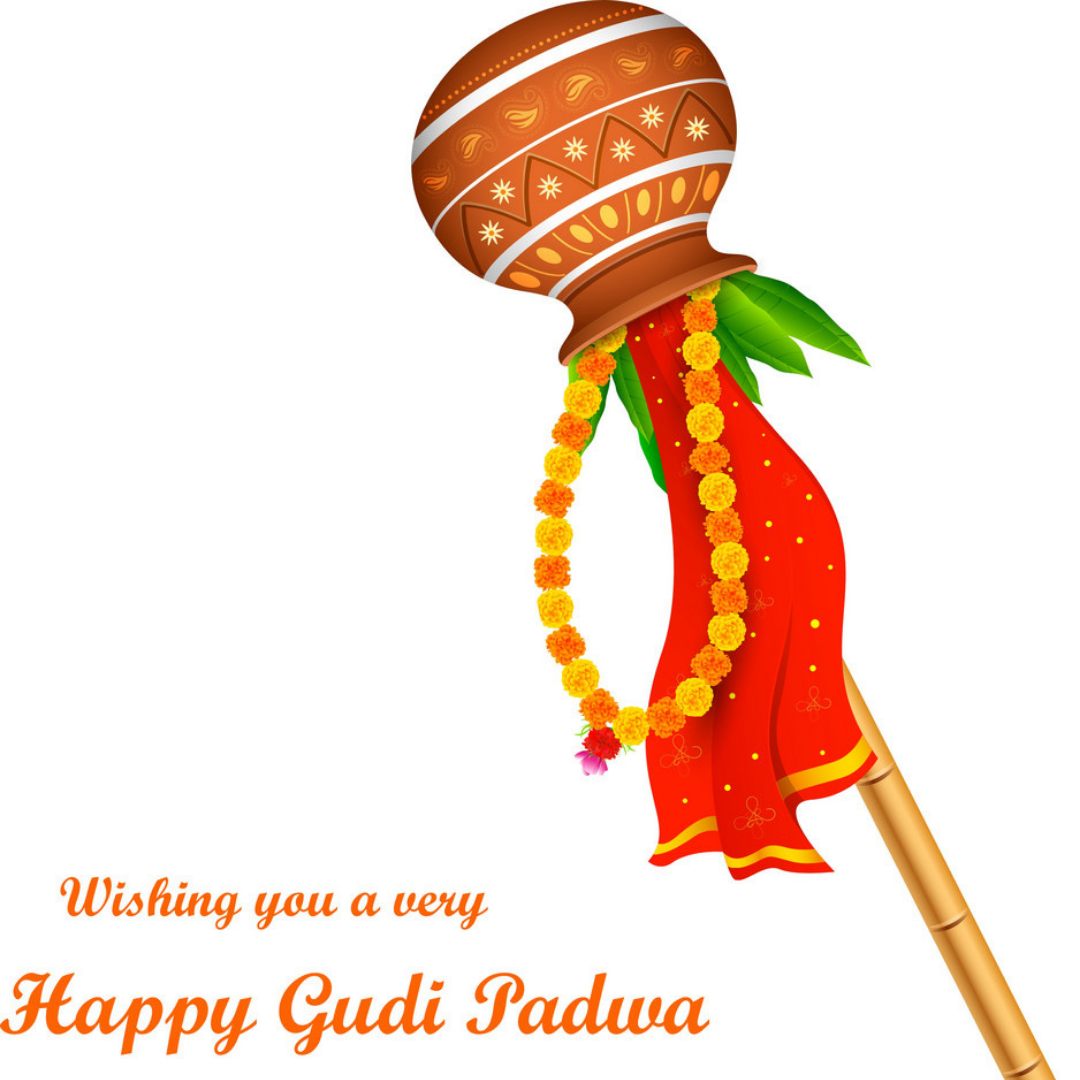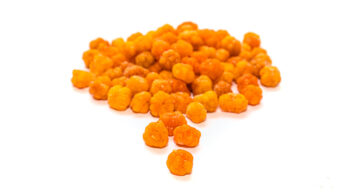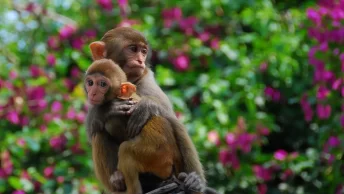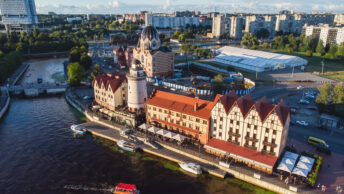HOW IS GUDI PADWA CELEBRATED? / WHAT TO DO ON GUDI PADWA?
Gudi Padwa is about new beginnings. The preparation for Gudi Padwa celebrations starts days ahead when houses are thoroughly cleaned like it is done before the festival of Diwali. Like every year, Gudi Padwa 2022 will be a public holiday in Maharashtra. On the day of Gudi Padwa after having the traditional bath, the day starts with the ritual of having a paste of Neem leaves, Jaggery, and Tamarind as it purifies the blood and regulates its circulation. Another version of this paste also has Corriander seeds. Unlike other Indian festivals where having sweets is prevalent, Gudi Padwa festival celebrations include this unique ritual of having this bitter-sweet-sour mixture which in one way represents the way life tastes.The women of the house create beautiful multi-hued Rangolis outside the house and on the staircase leading to the house. This tradition holds huge significance and is an integral part of the celebrations. The Rangoli designs include the symbols of Swastik, Om, and other auspicious symbols. Coloured powder and sometimes flower petals are used for the Rangoli displays. Rangoli is said to invite prosperity and abundance into the house. Torans with a combination of Mango leaves and flowers are hung above the main entrance door. All family members wear new clothes. Women wear Gold jewelry as Gold is a symbol of prosperity and also prefers wearing the traditional Maharashtrian Nauvari saree on Gudi Padwa. Special dishes like Shrikhand-Poori, Puran Poli are made fresh for Gudi Padwa and are offered to God and the Gudi as well. The most important ritual of hoisting the Gudi is done by the family members with fervor. Traditionally the Gudi is raised by a senior member of the family. It is a day of bonding and togetherness with friends and relatives. Meeting friends, exchanging gifts with each other, and having meals/sweets together is the order of the day. The doors of the house are kept wide open to welcome all guests.In cities and towns of Maharashtra, processions of men and women with flags in their hand, dressed in colorful traditional attire dancing and singing about the valor of Chattrapati Shivaji Maharaj is a common sight. The traditional Maharashtrian dance Lezim is often seen being performed in these processions with the accompaniments of traditional drums and Bugal of Maharashtra.As Rangoli is an important part of Gudi Padwa, Rangoli displays are seen on the streets too. Rangoli competitions are organized in many areas of cities that have enthusiastic participation. The tradition of buying Gold, new houses, vehicles, the inauguration of new businesses/shops is prevalent. Because the day is highly auspicious so it is considered anything new started on this day will be blessed to reap abundance. The auspicious occasion of Gudi Padwa 2022 is eagerly awaited by everyone who celebrates it. It is a day when deities are invoked for blessings, the Gudi is raised to ward off evil and everyone is prepared to relax, indulge, and enjoy this day. These are some of the widely followed Gudi Padwa rituals.
Gudi Padwa Special Products from Rudra Centre
Gudipadwa Puja Kit
We offer a kit specially prepared for Gudi Padwa festival. It contains all the essential items to prepare Gudi for decorating the entrance of house.
Gudi Padwa Puja:
Whether new home, new business or new beginning in life, Gudi Padwa Puja is a great and divine start-off to invite positivity, good health, auspiciousness into your life.
Ramayana Path:
It is best for warding off all the negative energies and for harmony in personal life. Get the blessings of Lord Ram and Hanumaanji with this puja.
Lakshmi Kuber Puja & Yagna
This puja breaks all the barriers that come your way of accumulating wealth and money. Get the blessings of Lakshmi and Kuber with this puja.
Rama Darbar Puja & Yajna
This puja is best for those seeking healthy, prosperity and relief from diseases. Get the blessings of Lord Rama, Goddess Sita, Lakshman ji and Hanuman ji.
Brahma Gayatri Puja & Yajna
A highly powerful Homa (Havan) for nullifying your bad karmas and gaining wisdom, intellect and material riches in life.
Puja for Starting New Business
A special Puja for new business ventures or start-ups. Start your venture with all auspiciousness and grace of Lakshmi.
Puja for Purchasing Asset
Complement your decision to invest in wealth with this special Puja for purchasing right assets at right tine.
Этимология [ править ]
| В этом разделе не процитировать любые источники . Пожалуйста, помогите улучшить этот раздел , добавив цитаты из надежных источников . Материал, не полученный от источника, может быть оспорен и удален . ( Март 2018 г. ) ( Узнайте, как и когда удалить этот шаблон сообщения ) |
Традиционный гудхи
Гудхи означает флаг, установить флаг на домах как часть празднования в Махараштре, где его в основном отмечают. По словам Киттеля, слово принадлежит южноиндийскому языку происхождения.
Слово pāavā происходит от санскритского слова pratipad, обозначающего первый день каждых двух недель лунного месяца, то есть первый день появления луны после так называемого дня «новолуния» ( amāvāsya ) и первый день после полнолуния. Луна. По этому случаю также поднимается Гудхи, давший этому фестивалю название. Термин падва или падаво также связан с балипратипадом – третьим днем Дивали [ необходима цитата ], который является еще одним праздником, который наступает в конце сезона сбора урожая.
GUDI: CENTRAL FIGURE OF THE FESTIVAL
People raise Gudhi (Gudi) on the right side of their houses on the outside. It is made of a long wooden bamboo covered with an overturned copper pot called Kalasha and a brocade-filled yellow piece of cloth (green or saffron at times). Atop are the sugar crystals, neem leaves, and a twig of mango leaves with a garland of flowers is kept.
- Kalash means pot. In the revealed scriptures Kalash is called purnakalash. Purna means complete. So it is a complete pot with purity used for keeping holy waters or other ceremonial liquids
- Colours of the cloth used are generally yellow, green, or saffron. The yellow color represents sato guna. It symbolizes Agni the Fire God and Surya elements and kills tamasic energies or the darkness (ignorance). Green and saffron represent life, beginning as Lord Brahma had created the cosmos on this day and the fire element (divine) that leads the intense yellow (pure fire), respectively. A twig of Mango leaves represents immortality
- Red flowers used in the Gudi epitomize the qualities of passion against the negative elements. In the Vedas, all the aggressive deities such Goddess Kali signify red color that intimidates the survival of the evil spirits
- Sugar crystals: Panchamrit has Sugar as one of the ingredients. It represents sweetness. Being sweet, humble , and respectful is the first quality of people in the mode of goodness (Sato guna). In the entire Ramayana, Lord Rama never used harsh languages against any of His subjects including His enemies.
Байсаки
В индийском штате Пенджаб 13 или 14 апреля отмечают Байсаки, один из самых любимых сикхских праздников. Это одновременно и праздник урожая, и новогодний день,
и религиозный праздник равенства, когда последний сикхский гуру провозгласил, что все люди братья, таким образом, устранив различия между кастами.
По поверьям индусов, в этот день несколько тысяч лет назад богиня Ганга спустилась на Землю, поэтому в Байсаки многие из них вместе собираются на ритуальные купания у берегов священной реки Ганг.
В этот день пенджабцы просыпаются ранним утром и посещают храмы с цветами в руках. Они принимают участие в специальных религиозных мероприятиях. После посещения храма верующие едят кара прасад — специальное блюдо из сладкой муки и масла.
В течение всего дня праздничные процессии движутся по улицам. Тысячи людей принимают участие в торжественных шествиях, поют религиозные песни, танцуют, идут с флагами и цветами, барабанщики выбивают марши. Мужчины размахивают мечами, а некоторые из них едут на красиво украшенных лошадях. Все поздравляют друг друга и желают счастья.
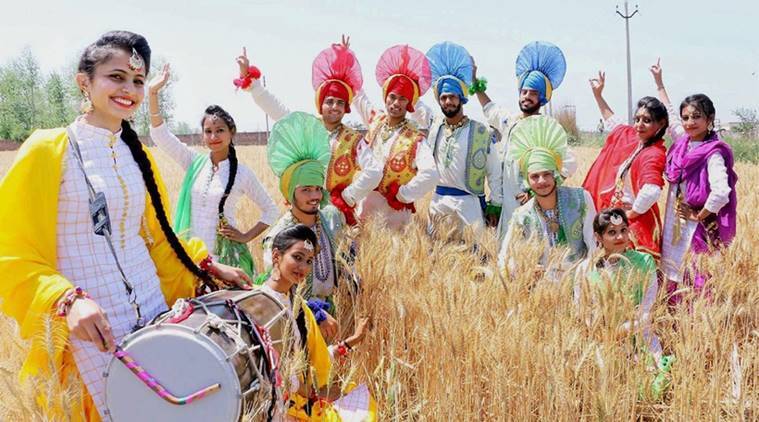
Пенджабские фермеры несколько по-другому отмечают Байсаки. В этот день они готовят национальные блюда, устраивают многолюдные ярмарки и концерты, наряжаются в новую одежду, поздравляют друг друга с Новым годом. В поле собирается большое количество людей, проводятся народные танцы гидха и бхангра, посвященные празднику урожая.
Эти удивительные танцы выражают всю историю сельскохозяйственного процесса, начиная от посева и пахоты и заканчивая сбором урожая. Мужчины наряжа-ются в белые рубашки, яркие жилетки, цветные тюрбаны, подобие
юбок и исполняют танец бхангра. Они совершают замысловатые движения под звуки дхола — национальных барабанов.
Танец гидха исполняют женщины. Они надевают много блестящих украшений, издающих приятный звон при каждом движении, и красочные наряды. Шумные торжества идут до позднего вечера.
Байсаки, приносящий радость и веселье, еще долго останется в памяти пенджабцев, с нетерпением ожидающих следующего Нового года.

GUDI PADWA PUJA VIDHI
- Traditionally Gudhi Padwa Puja starts with an oil bath before sunrise, by first rubbing oil on the body and then having a bath. The Sun energies are imbibed by the devotees on Sunrise.
- The family members worship at the puja altar at home. Offerings of the special sweets are made which are prepared on that day along with other Naivedya
- The Hoisting of the Gudi is the most significant part of the Gudi Padwa puja. It is installed as per the Tithi after Sunrise. So after assembling the Gudi/Gudhi, it is raised by invoking the blessings of Bramha and Vishnu by chanting their mantra and addressing the Lord in this way: “O Lord Brahma, Lord Vishnu Please enable me to absorb the Principle of Creation and the Fire Principle present in the atmosphere. Let the Divine consciousness present in these principles be preserved constantly. Let the energy thus received, be used for my spiritual practice”
- The aarti of the Gudi is performed along with offerings
- Some choose to perform Homa or Havan at home and some also visit temples to worship On this auspicious day, the prayers and the intentions of everyone are that of hope and positive expectations for the year to follow. Other information of Gudi Padwa is available on various websites or can be enquired from experienced family members or friends.
Gudi Padwa Special Products from Rudra Centre
Gudipadwa Puja Kit
We offer a kit specially prepared for Gudi Padwa festival. It contains all the essential items to prepare Gudi for decorating the entrance of house.
Gudi Padwa Puja:
Whether new home, new business or new beginning in life, Gudi Padwa Puja is a great and divine start-off to invite positivity, good health, auspiciousness into your life.
Ramayana Path:
It is best for warding off all the negative energies and for harmony in personal life. Get the blessings of Lord Ram and Hanumaanji with this puja.
Lakshmi Kuber Puja & Yagna
This puja breaks all the barriers that come your way of accumulating wealth and money. Get the blessings of Lakshmi and Kuber with this puja.
Rama Darbar Puja & Yajna
This puja is best for those seeking healthy, prosperity and relief from diseases. Get the blessings of Lord Rama, Goddess Sita, Lakshman ji and Hanuman ji.
Brahma Gayatri Puja & Yajna
A highly powerful Homa (Havan) for nullifying your bad karmas and gaining wisdom, intellect and material riches in life.
Puja for Starting New Business
A special Puja for new business ventures or start-ups. Start your venture with all auspiciousness and grace of Lakshmi.
Puja for Purchasing Asset
Complement your decision to invest in wealth with this special Puja for purchasing right assets at right tine.
Гуди-падва — индусский Новый год для маратхов
В этот день, согласно писаниям, Брахма сотворил мир.
Празднуется Гуди-падва в первый день прибывающей луны
месяца чайтра по календарю маратхов и знаменует приход весны.
Эта дата по Григорианскому календарю попадает на конец марта — начало апреля. Знаменует фестиваль приход весны — жаркого времени года, сбора урожая и сезона манго.
Утром генеральная уборка проходит во всех домах,
после чего жители Махараштры принимают пасту из листьев своеобразного очистителя, дерева ним и гура — неочищенного пальмового сахара.
Сочетание горького и сладкого для индусов служит
своеобразным символом. Приятные и сладкие жизненные
события обязательно должны приходить вместо горечи.
Семьи рисуют яркие ранголи возле домов, и с этого начинается фестиваль. В ярких рисунках преобладают желтый
и зеленый цвета как символы богатого урожая и земли.
Танцы, торжественные шествия в этот день проходят
в штате Махараштра. Участницы надевают традиционные
сари, участники — праздничную рубаху и штаны, то есть
курту-паджаму. У индусов своеобразным процессом мо-
литвы считается… танец. Именно поэтому в новогодние
дни выбирают лучшую танцовщицу.
Праздник огня означает начало встречи Нового года:
из бумаги мастерят великана Равана, а затем один из индий-
цев в костюме Рамы — героя национального эпоса «Рамаяны» — пускает в существо горящую стрелу, и под торжественные крики собравшихся великан сгорает.
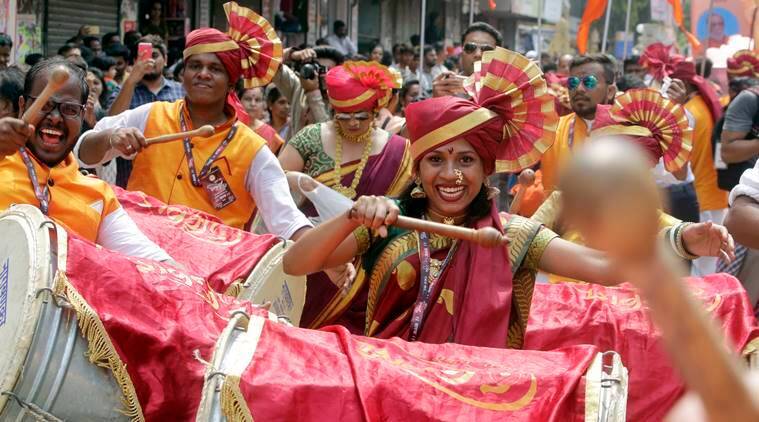

Также из Индии пришла традиция запускать на Новый год воздушных змеев, причем поучаствовать в этом празднике детства могут практически все желающие.
Считается, запуская змея, нужно загадать желание на Новый год, и тогда оно обязательно сбудется.
Празднества
Ранголи на Гудхи Падва
В праздничный день дворы в деревенских домах будут выметаны и залиты свежим коровьим навозом. Даже в городе люди тратят время на генеральную уборку. Женщины и дети работают над замысловатыми узорами ранголи прямо у порога, яркие цвета отражают всплеск цвета, связанный с весной. Все переодеваются в новую одежду, и это время для семейных посиделок.
Традиционно семьи готовят специальное блюдо, в котором сочетаются разные вкусы, в частности, горькие листья дерева нима и сладкий пальмовый сахар ( гур, гуль ). Дополнительные ингредиенты включают кислый тамаринд и вяжущие семена дхане. Это, как и рецепт пакчади, использованный на фестивале Угади , едят как напоминание о сладких и горьких переживаниях в жизни, а также как веру в то, что смесь на основе нима полезна для здоровья.
Maharashtrian семья также сделать много других праздничных блюд, такие как shrikhand и Poori или Пуран Poli в этот день.
WHAT IS GUDI PADWA OR UGADI AND WHY DO WE CELEBRATE GUDI PADWA?
Gudi Padwa is the most important festival for the state of Maharashtra and Konkan region i.e. Goa of India where it is referred to as Saṁsāra Pāḍavo. Considered a significant traditional festival, it is celebrated as the New Year by Maharashtrian Hindus. Gudi Padva/Padwa is celebrated in different states and regions of our country in different styles or with a different set of rituals and is known by various names. This day is celebrated as the Ugadi festival in Telangana, Andhra Pradesh, and Karnataka. It is called “Ugadi” in Telugu and “Yugadi” in Kannada. Padwa originates from the word ‘Paddava’ which means the foremost day or the first day and refers to the waxing Moon and ‘Gudi’ is the symbolical flag which is raised which explains the Gudi Padwa meaning. Gudi Padwa is celebrated on the first day of the Chaitra month (as per the lunisolar Hindu calendar), which coincides with the first day of Shukla Paksha (first day after New Moon) which falls in March-April. The mood in and around the state of Maharashtra changes to a happy, joyous celebratory mode on this day that includes traditional rituals too. Families enthusiastically decorate their houses to welcome the New Year in anticipation of an excellent year ahead, vibrant coloured clothes are worn and the infectious mood translates to smiling faces everywhere on this day of the Gudi Padwa festival.
When is Gudi Padwa?
Gudi Padwa or Parva is going to be celebrated on Saturday, 2 April, 2022. Prtipada Tithi Begins – 11:53 AM on Apr 01, 2022 Prtipada Tithi Ends – 11:58 AM on Apr 02, 2022
Scroll Down to read moreShop Now for Energized Products
INR 415 | USD 5.31
Product Code : YP19
INR 1,025 | USD 13.12
Product Code : LB10
INR 1,100 | USD 14.08
Product Code : DSY01
INR 350 | USD 4.48
Product Code : AC01
INR 1,50,000 | USD 1,920.00
Product Code : RJC20AD
INR 9,501 | USD 121.61
Product Code : PY115
INR 6,135 | USD 78.53
Product Code : NSB07
INR 25,200 | USD 322.56
Product Code : RLG01
INR 9,501 | USD 121.61
Product Code : PY260
INR 280 | USD 3.58
Product Code : RCL01
INR 1,450 | USD 18.56
Product Code : SR122
INR 17,600 | USD 225.28
Product Code : SMC04
INR 68,410 | USD 875.65
Product Code : MIC09
INR 0 | USD 0.00
Product Code : CBN20
INR 2,675 | USD 34.24
Product Code : GPY14
INR 2,500 | USD 32.00
Product Code : YSF18
INR 6,500 | USD 83.20
Product Code : MRY02
INR 2,000 | USD 25.60
Product Code : MY20
INR 11,450 | USD 146.56
Product Code : OLG13
INR 1,02,600 | USD 1,313.28
Product Code : ABK01
Guḍhī Pāḍavā на других языках, государствах и людях [ править ]
Этот фестиваль, известный в Махараштре как Гунхи Панава («Гудхи Паадава») , также известен как
- Samvatsar Padvo среди индусской Konkanis из Гоа и Конкани диаспоры в Керале
- Югади среди остальной конкани диаспоры в Карнатаке и Угади в штате Андхра-Прадеш Телангана и Наврех среди кашмирских пандитов
В других частях Индии этот фестиваль отмечается во время
- Угади в штате Андхра-Прадеш и Телангана
- Югади в Карнатаке
- Чети Чанд среди синдхов
Он также отмечается в северо-восточном штате Манипур как Саджибу Нонгма Панба Чейраоба, а также в таких странах, как Непал, Бирма, Камбоджа и других странах, где проживает много индуистов. В этот день люди готовят самые разные блюда и блюда, а вечером поднимаются на холмы.
В Кашмире община кашмирских индусов или пандитов, а также община кашмирских сикхов празднуют этот фестиваль как Наврех, начало Нового лунного года. Большой тхал, а именно латунная тарелка для еды, наполнен сырым рисом и помещен в него новый Пунчанг, Кашмирские индуистские эфемериды. Немного вареного риса, творога, соли, все в маленьких чашках, хрустящая денежная купюра и монета, ручка, несколько цветов, золотой браслет, серебряное украшение, 3 или 5 грецких орехов также помещаются в этот Тал. Ожидается, что каждый увидит этот тхал первым делом с утра. Обычно старшая хозяйка в доме видит его первой, а затем приносит, чтобы показать всем спящим членам семьи. Ожидается, что все будут одеты в новую одежду, а детям дадут немного денег, чтобы они могли насладиться фестивалем. Обед – это праздник.
В Пенджабе новый год празднуется как Байсаки, выпадающий в основном на 13 или 14 апреля, в первый день месяца Найсах Бикрам Самавт или календаря.
в Бенгалии это событие отмечается как Наба Барша, в Ассаме как Биху, в Керале как Вишу, в Тамил Наду как Путуханду. Считается самым благоприятным днем в году.
Гунхи [ править ]
Примечательным зрелищем во время Гудхи Падвы являются многочисленные Гудхи (или Гудхи ) в каждом доме. Это яркий разноцветный шелковый платок, похожий на ткань, перевязанный сверху длинным бамбуком. Сверху к нему прикреплены одна или несколько ветвей листьев нима и листьев манго вместе с гирляндой из цветов. Это устройство увенчано серебряным, бронзовым или медным горшком ( ханди или калаш ), символизирующим победу или достижение. Вся конструкция поднимается за пределами каждого дома, обычно справа, через окно или террасу. Это видно всем. Деревни или кварталы также объединяются и создают общину Гудхи Кавад., которые они вместе несут в местный храм Шивы.
Гудхи в Джамти Х. деревня Хинголи Талука, Махараштра
Некоторые храмы расположены на вершинах холмов, и группы работают вместе, чтобы помочь достичь кавад на вершину.
Некоторые из значений, приписываемых подъему Гудхи, следующие:
Фестиваль Гудхи Падва отмечает новый год, но также празднует победу воинов маратхов в процессиях.
- Он символизирует победу царя Шаливаханы и был поднят его людьми, когда он вернулся в Пайтан .
- Гудхи символизирует Брахмадхвадж (перевод: флаг Брахмы ), упомянутый в Брахма-пуране , потому что Господь Брахма создал вселенную в этот день. Он также может представлять Индрадхвадж (перевод: флаг Индры ).
- Исторически Гудхи символизирует победу и счастье Господа Рамы по возвращении в Айодхью после убийства Раваны. Так как символ победы всегда высоко держится, гудхи (флаг) тоже. Считается, что этот фестиваль отмечается в ознаменование коронации Рамы после его возвращения в Айодхью после завершения 14 лет изгнания.
- Считается, что Гудхи отгоняет зло, приглашает в дом процветание и удачу.
WHY GUDI PADWA IS CELEBRATED?
Every cultural festival of India has a reason behind its celebration. The entire celebration of Gudi Padva revolves around three major reasons. First, it is believed that Lord Brahma created the cosmic universe on this day. Second, Lord Rama returned to Ayodhya after the war against Ravana. And third, it underlines the beginning of Spring or Vasant Ritu as the sun planet is above the intersecting point of Equator. Another significant reason for celebrating Gudi Padwa is that it marks the harvest /reaping of Rabi crops. As India is chiefly an agricultural country, this is an important sign of Gudi Padwa. In Maharashtra, locals celebrate by honoring Shivaji Maharaja and his victory over the Mughal dominance in the region. It is believed that the Gudi which is raised on the day in Maharashtrian Hindu homes is also to honor his victory.
Story of Gudi Padwa
The story of Lord Brahma has special importance for Gudi Padwa. The Puranas narrate that the Universe was completely wiped out by an enormous deluge. Even the cycle of time stopped. Lord Brahma recreated the Universe and re-initiated time to start once again, on the day that Gudi Padwa is celebrated. This is the reason why the Gudi is also called ‘Brahma Dhwaja’ and raised to commemorate this event. On this day Lord Brahma, the Creator, is worshipped too.
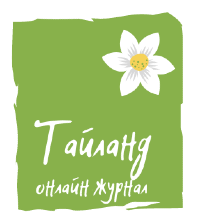

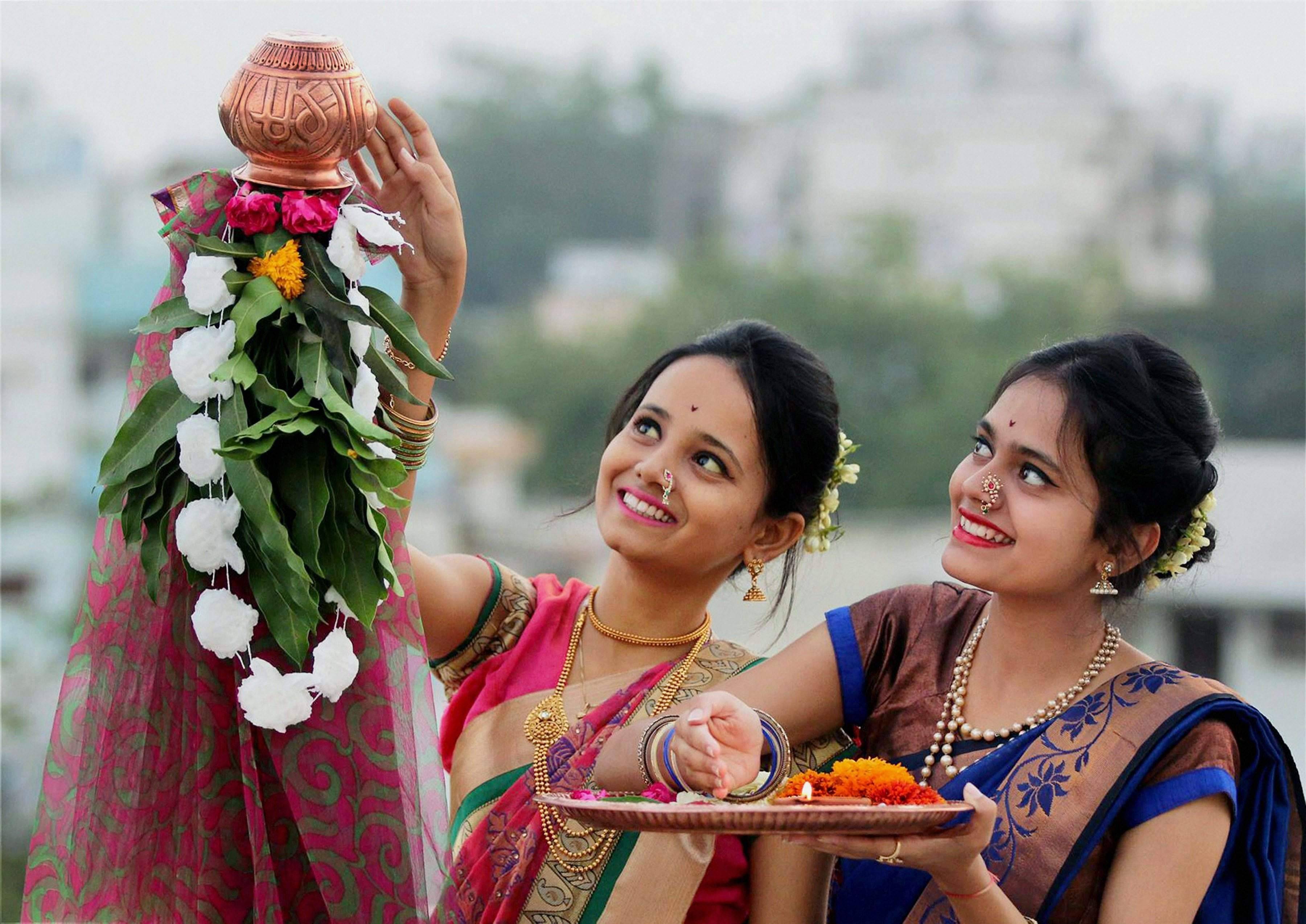
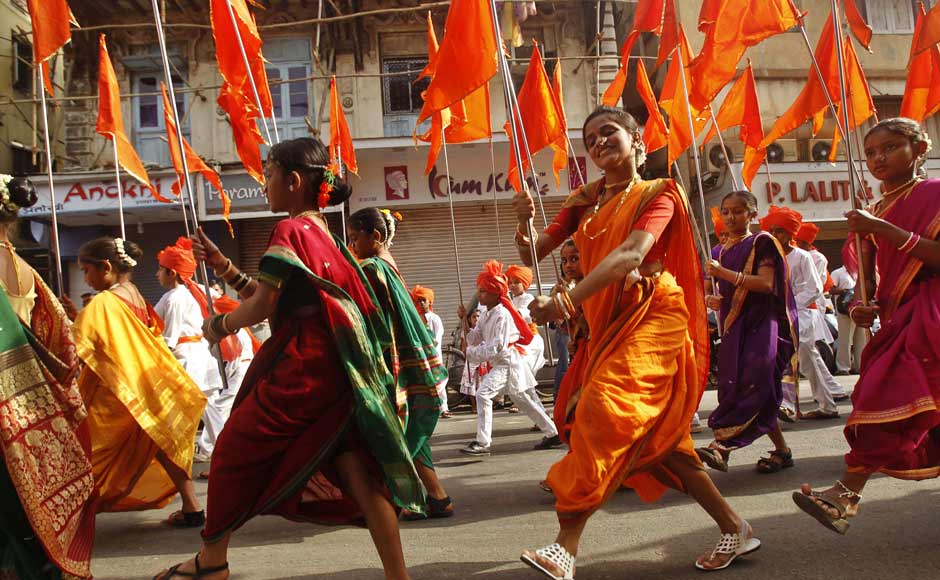
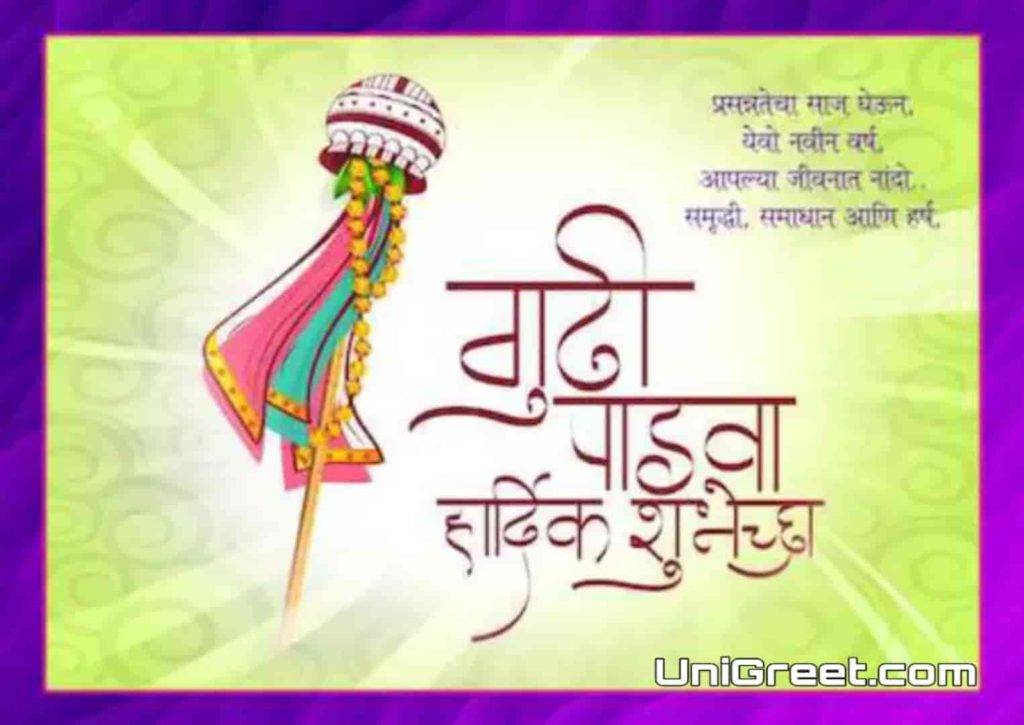
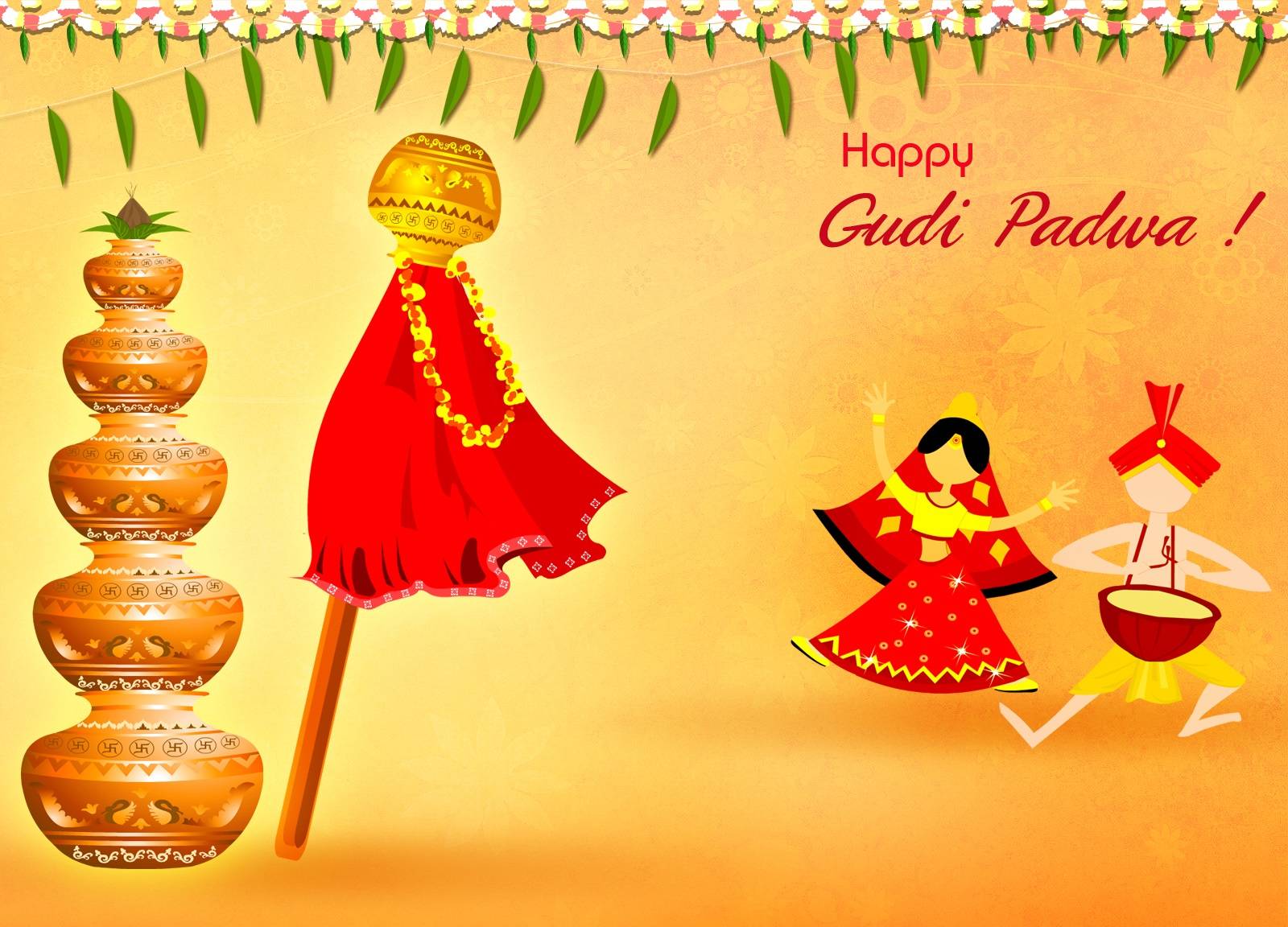

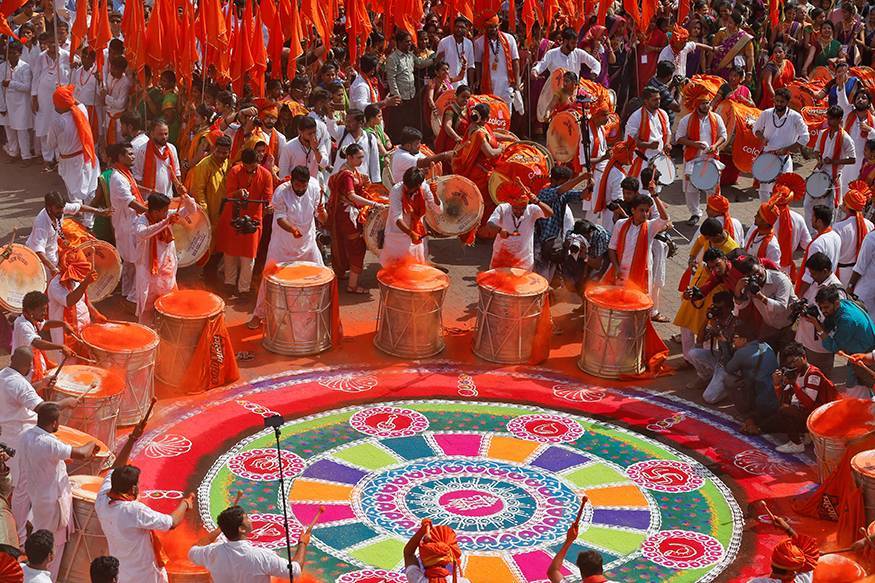
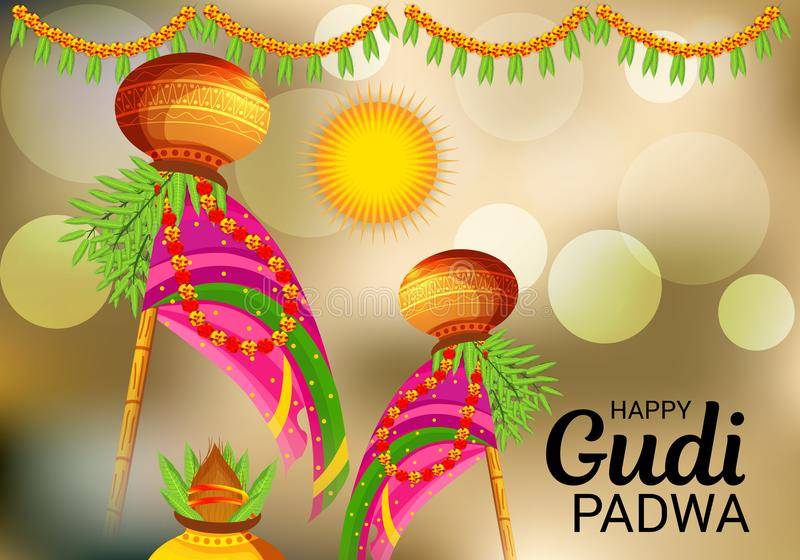
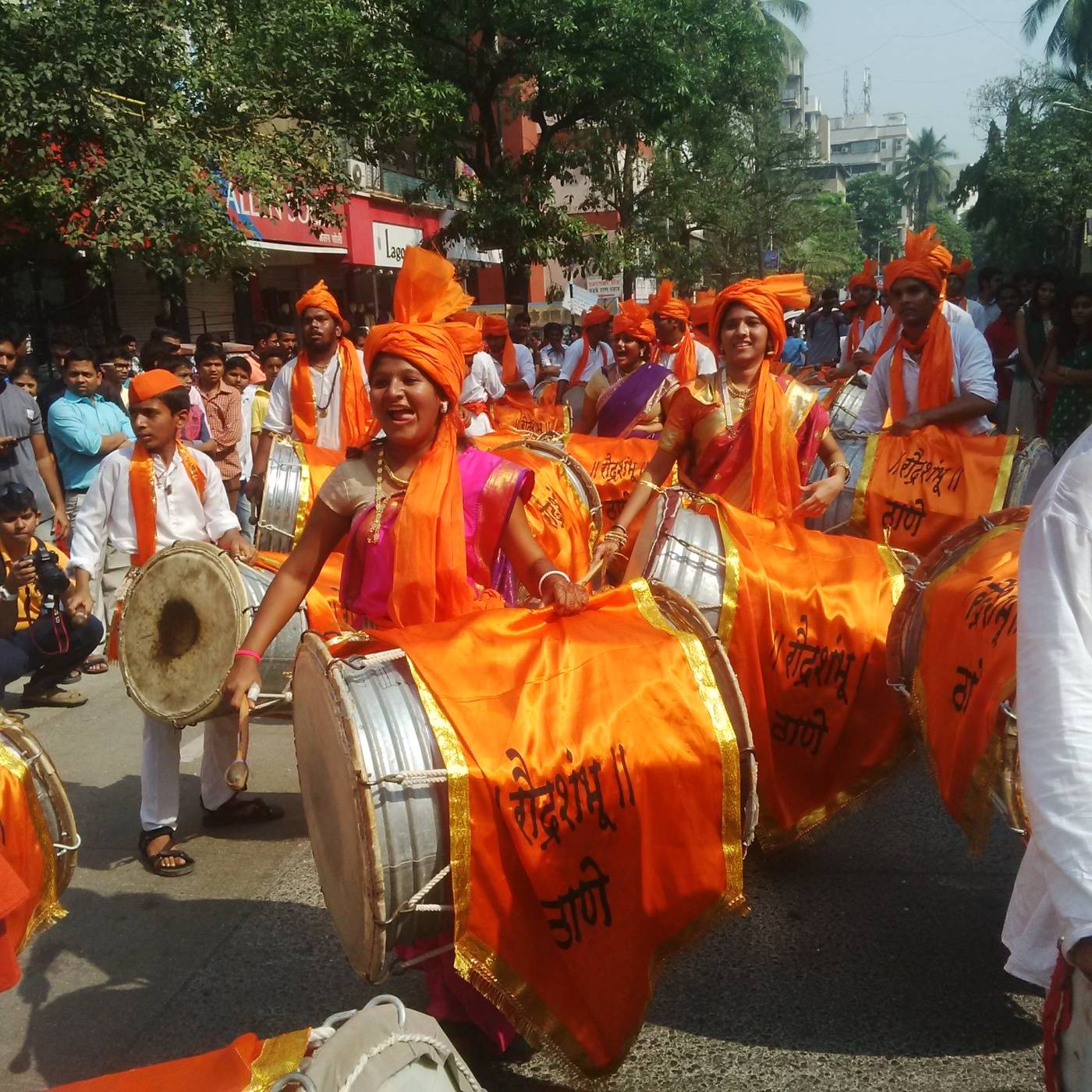

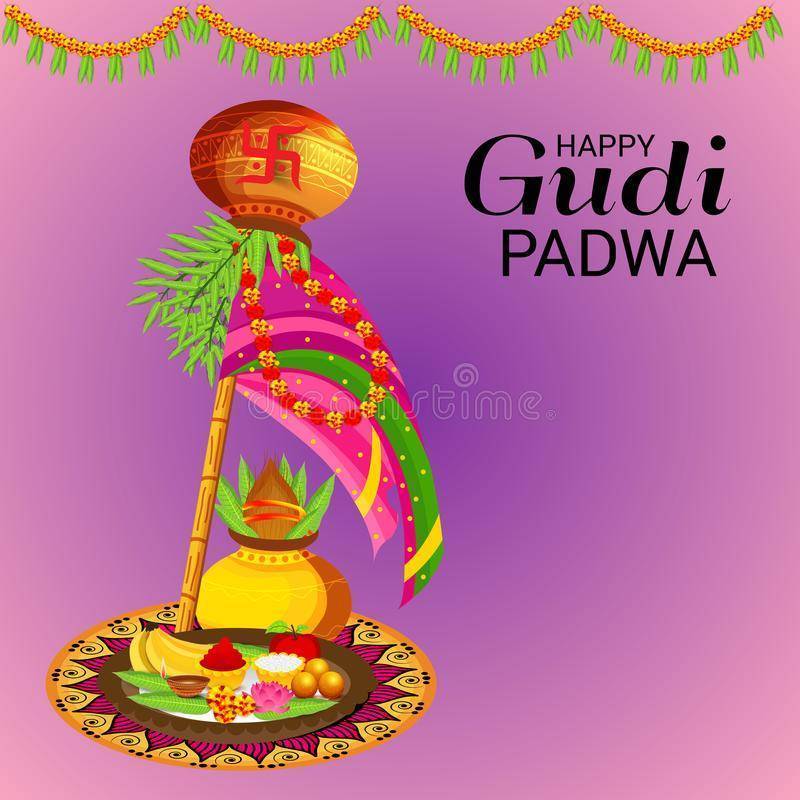
![Гуди падвасодержание а также этимология [ править ]](https://thailand-good.ru/wp-content/uploads/d/b/8/db8c3fc6589bfd027e5a01775fdfae61.jpeg)
